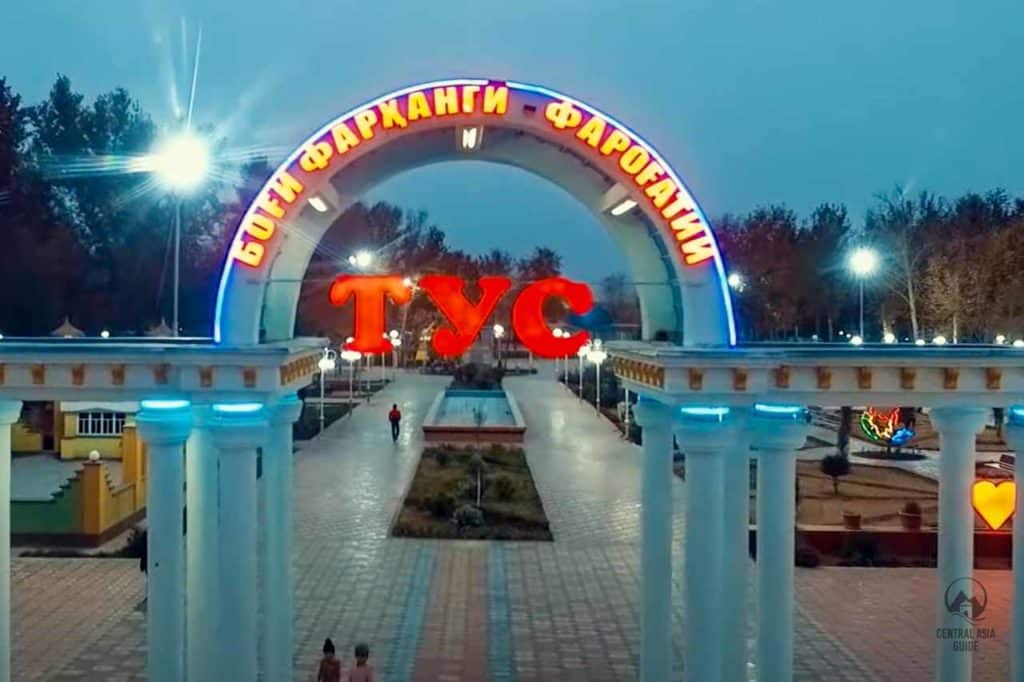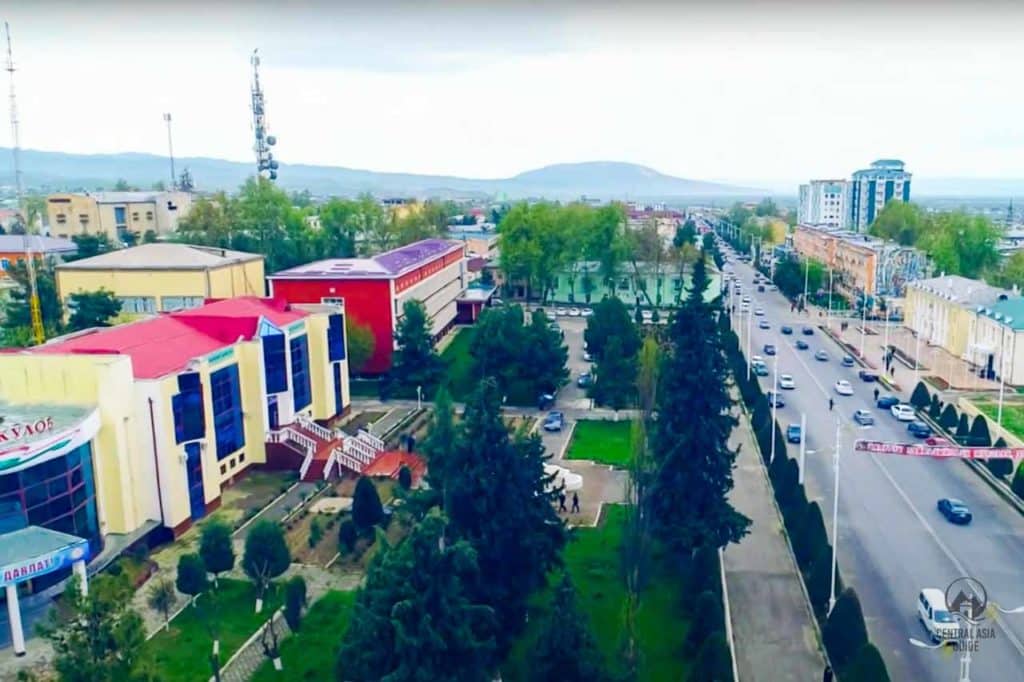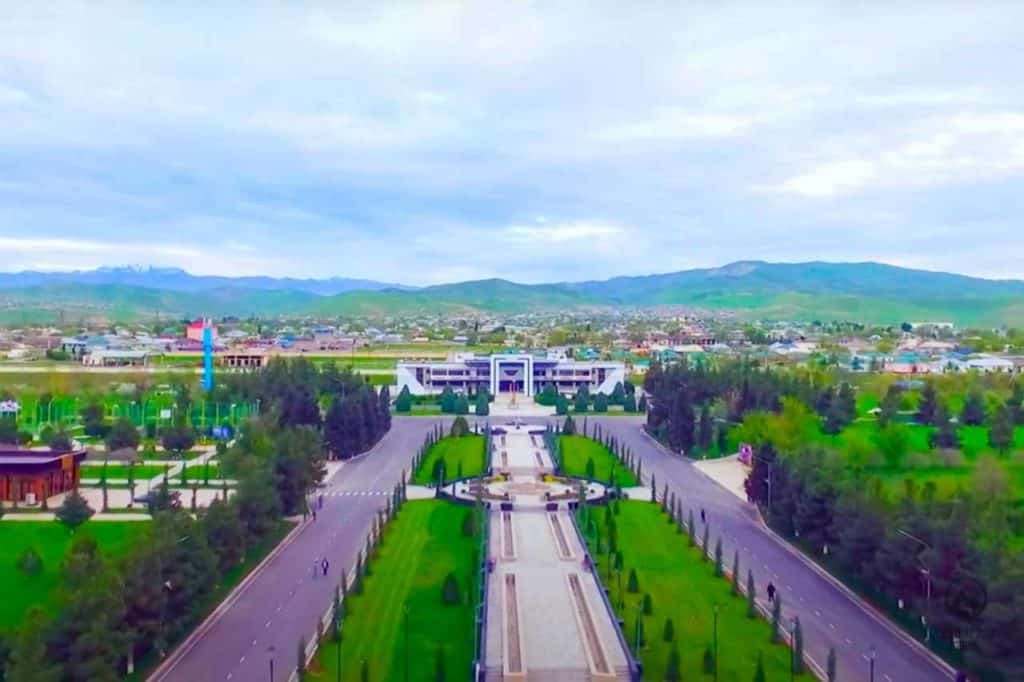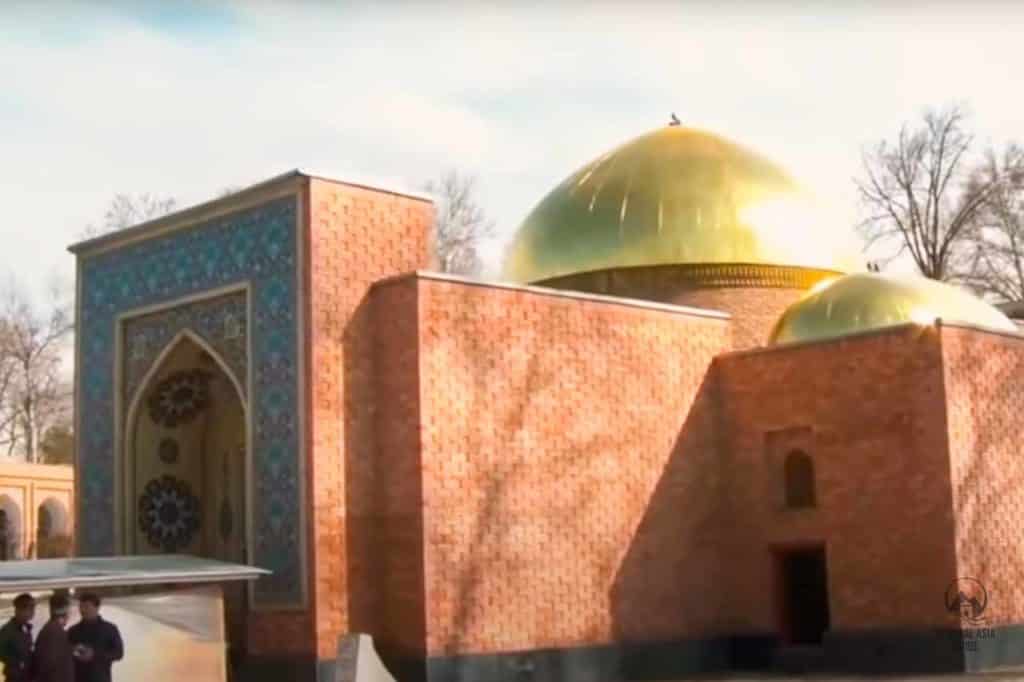Kulob
Kulob
Kulob is the third-largest city situated 203 km southeast of Dushanbe on the Yakhsu River, a tributary of the Panj at 580 m above sea level. Kulob is politically significant since Rahmon was the city’s governor before taking the presidency in 1992. The has a population of 150,000 it makes it one of Tajikistan’s largest urban centers. Kulob means “a swampy place or rushes” and has also been called Kulab or Kulyab.


History
The Kulob Monument (on I. Somoni str) is supposed to celebrate 2,700 years of Kulob, but in reality, the city you see today is almost entirely a 20th-century creation, its archaeological heritage well buried beneath the Soviet-era concrete. Historically Kulob was a settlement of some note, with a substantial-sized fortress. It is mentioned in the records of early pilgrims Ibn al-Atir and Saudi Ali Rais.
The last king of Kulob (then known as Khatlon), Kai-Khatloni, fought for Timur on his campaigns in Afghanistan and achieved some local fame; his rule and that of his successors brought Kulob to regional prominence, and the city became the provincial capital in 1555. It was not strong enough to retain its independence, however, and it was included in the khanate of Bukhara in the 16th century.
Kulob continued to act as a shield state between Bukhara and Afghanistan well into the 19th century when it briefly fell into the hands of the khan of Kokand, was destroyed and rebuilt, then returned to Bukharan control.
After the Bolshevik Revolution, Kulob became a stronghold for Basmachi resistance fighters and remained so for several years after the rest of central Asia had fallen to the Red Army.
The Soviets industrialized Kulob and raised farming in the province, focusing on cotton and cereal production in large-scale collective farms. After independence, the Kulobis were one of the main civil-war parties, and they directed and undertook some of the greatest crimes of the early 1990s, including ethnic cleansing and a scorched earth policy for rival territories. It was the former communist leader of Kulob, Emomali Rahmon, who would rise to the top as Tajikistan’s president in 1992, and many other members of government then and now hail from Kulob and the surrounding towns.

Khoja Mir Sayid Hamadani Mausoleum
Mausoleum of Khoja Mir Sayid Hamadani perhaps the main sight to visit in the city. He was a poet and scholar of the 14th century. Born in Hamadan, in Iran, he is famous for having spread the word of Islam in Kashmir. He died across the river in Afghanistan and was buried here – a reminder of Kulob’s pre-Soviet significance as a corridor between India and the Arab world. Pilgrims still visit the site to seek his blessing. Hamadani’s mausoleum is a marvelous building renovated with Iranian money, of golden domes, and situated in delightful gardens with some attractive gumbaz.

There is an interesting museum next to the mausoleum alongside the tomb, containing several ancient Qurans and writings by Hamadani, including one on guidelines for a wise ruler. The renovation of the museum also was funded by the Iranian government.
The large and slightly ostentatious Kulob Monument was erected in 2006 to mark the 2,700th anniversary of Kulob’s theoretical foundation. It stands in a pleasant square on I Somoni, close to the Hotel Khatlon. You can meet there some wedding couples taking pictures.
Next to the Memorial Centre is a new pink museum, containing a good range of ancient pottery, including a wine press, Tajik costumes and rugs. There are some Socialist Realist paintings, including a magnificent propaganda one of the first ascent of Pik Lenin.
Around Kulob
Dashtijum Nature Reserve
Dashtijum Natural Reserve is quite a small area occupying just 450km2 on the lower slopes of the Hazrati Shah Mountains. Vegetation in the reserve differs from deciduous forest to juniper bushes and its eco-systems support more than 200 species of vertebrates, including 51 types of mammal. Amongst the rarer species are the Tian Shan brown bear, snake eagles and markhor. There are even occasional sightings of snow leopards. Dashtijum is on the UNESCO tentative list to become a World Heritage Site.
Danghara City
The city of Danghara is located 2 hours south of the Dushanbe after the Nurek Dam and northwest of Kulob. It is the hometown of President Emomali Rahmon. Hence, the town turned into a provincial capital where the president invested a lot of money. With the population of the town is 31,100 the city is full of new grand contractions. The result is in front of you, some luxurious homes of the presidential family, a beautiful palace of culture with a Rahmon museum, and the third biggest tea house in the world. Here you can see the contrast between the wealthy buildings and the rural poverty surrounding them. Since July 2018 Danghara, the town is famous, because of the terrorist attack that killed 4 cyclists on the road. Perhaps, due to the location as well as circumstances it was unfortunate. However, the country still safe for visitors particularly the Pamir highway due to its remoteness. After the incident, the Tajik government installed a memorial for the cyclists here.
Hulbuk Fortress
Hulbuk Fortress also known as the Palace of the Governor of Khulbuk is a medieval fortress, a palace of the ruler, and fragments of an ancient fortification. Hulbuk fortress has a long history and is a symbol of the history of the civilization of the Tajik nation.
How to Get to Kulob
There is an excellent smooth new road between Dushanbe and Kulob. Local drivers do tend to speed along, though it’s wide enough to keep out of their way. The minibus ride takes three hours and they drop off and pick up passengers from the large bus stand at the western end of I Somoni.